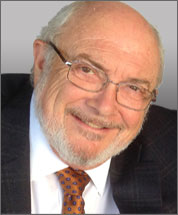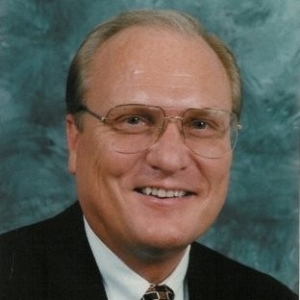Friday Filosophy v.09.30.2022
David William Donald Cameron (born 9 October 1966) is a British politician and lobbyist who served as Prime Minister of the United Kingdom from 2010 to 2016. He was Member of Parliament (MP) for Witney from 2001 to 2016 and leader of the Conservative Party from 2005 to 2016. He identifies as a one-nation conservative, and has been associated with both economically liberal and socially liberal policies.
Born in London to an upper-middle-class family, Cameron was educated at Heatherdown School, Eton College, and Brasenose College, Oxford. From 1988 to 1993 he worked at the Conservative Research Department, latterly assisting the Conservative Prime Minister John Major, before leaving politics to work for Carlton Communications in 1994. Becoming an MP in 2001, he served in the opposition shadow cabinet under Conservative leader Michael Howard, and succeeded Howard in 2005. Cameron sought to rebrand the Conservatives, embracing an increasingly socially liberal position, and introducing the “A-List” to increase the number of female and minority ethnic Conservative MPs. Following the 2010 general election, negotiations led to Cameron becoming prime minister as the head of a coalition government with the Liberal Democrats – the youngest holder of the office since the 1810s. His premiership was marked by the ongoing effects of the late-2000s financial crisis; these involved a large deficit in government finances that his government sought to reduce through austerity measures. His administration passed the Health and Social Care Act and the Welfare Reform Act, which introduced large-scale changes to healthcare and welfare. It also enforced stricter immigration policies, introduced reforms to education and oversaw the 2012 London Olympics. It privatized the Royal Mail and some other state assets, and legalized same-sex marriage in England and Wales.
Internationally, Cameron’s government intervened militarily in the First Libyan Civil War and authorized the bombing of the Islamic State. Domestically, his government oversaw the referendum on voting reform and Scottish independence referendum, both of which confirmed Cameron’s favored outcome. When the Conservatives secured an unexpected majority in the 2015 general election, he remained as prime minister, this time leading a Conservative-only government. To fulfil a manifesto pledge, he introduced a referendum on the UK’s continuing membership of the EU. Cameron supported continued membership; following the success of the Leave vote, he resigned as prime minister and was succeeded by Theresa May. Cameron has been the president of Alzheimer’s Research UK since 2017.
Cameron has been praised for modernizing the Conservative Party and for decreasing the United Kingdom’s national deficit. However, he has been criticized for his decision to hold the referendum on Britain’s membership of the EU, which led to political instability in the UK during the late 2010s. He has also been accused of elitism and political opportunism. After leaving office, he was implicated in the Greensill scandal after lobbying government ministers and civil servants on behalf of Greensill Capital.
- I believe that in life, you have to give things your best shot, do your best. You have to focus on what needs to be done, do the right thing, not the popular thing.
- The economy is the start and end of everything. You can’t have successful education reform or any other reform if you don’t have a strong economy.
- Today, hundreds of millions dwell in freedom, from the Baltic to the Adriatic, from the Western Approaches to the Aegean. And while we must never take this for granted, the first purpose of the European Union – to secure peace – has been achieved and we should pay tribute to all those in the EU, alongside NATO, who made that happen.
- Christmas gives us the opportunity to pause and reflect on the important things around us – a time when we can look back on the year that has passed and prepare for the year ahead.
- My view is, the most important thing as prime minister is trying to make the right judgments. In order to make good judgments, you need good advice; you need good principles, and you need a clear head, and you need to have a sense of equilibrium.
- The political system is broken, the economy is broken and so is society. That is why people are so depressed about the state of our country.
- After the Berlin Wall came down, I visited that city and I will never forget it. The abandoned checkpoints. The sense of excitement about the future. The knowledge that a great continent was coming together. Healing those wounds of our history is the central story of the European Union.
- If you lose control of your debt and deficit, you get massive cuts in things such as health and education. You get appalling insecurity, jobs lost, firms going overseas.
- I was the future once.
- I don’t just want a better deal for Britain. I want a better deal for Europe too. So, I speak as British prime minister with a positive vision for the future of the European Union. A future in which Britain wants, and should want, to play a committed and active part.
- From Caesar’s legions to the Napoleonic wars. From the Reformation, the Enlightenment and the industrial revolution to the defeat of Nazism. We have helped to write European history, and Europe has helped write ours.
- But we will say something else. That for far too long in this country, people who can work, people who are able to work, and people who choose not to work: you cannot go on claiming welfare like you are now.
- Let me completely condemn these sickening scenes; scenes of looting, scenes of vandalism, scenes of thieving, scenes of people attacking police, of people even attacking firefighters. This is criminality pure and simple and it has to be confronted.
- The best route out of poverty, to avoid food bank usage, is to make sure more people get a job.
- You don’t have to be a brilliant historian to know that in Europe, messing with countries’ borders, messing with their self-determination, their ability to choose their own futures, this is extremely dangerous, and that’s why I think it is important to stand up to Putin.
The Time is Now.
Did you enjoy this blog? Read more great blog posts here.
For our course lists, please click here.







 ‘
‘